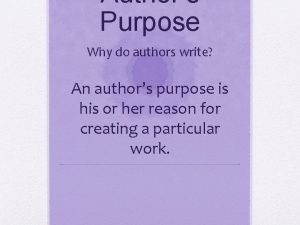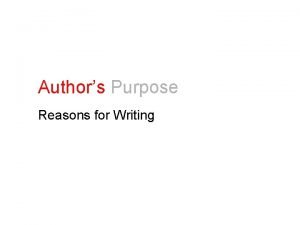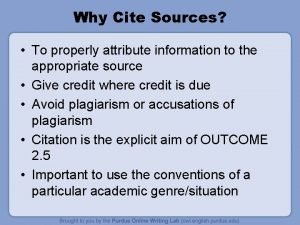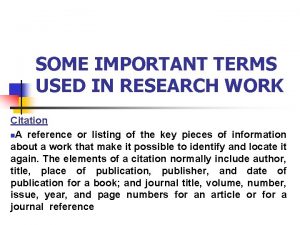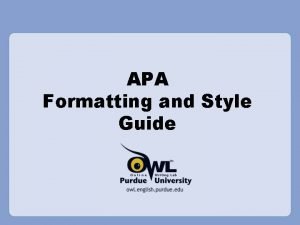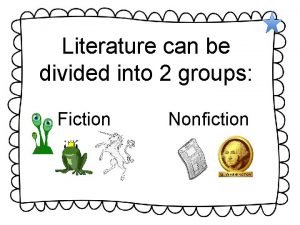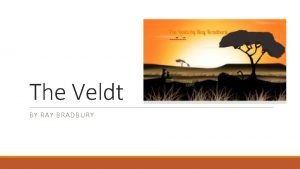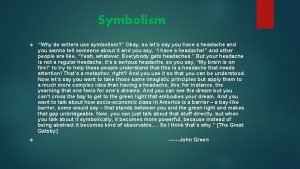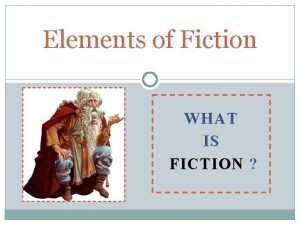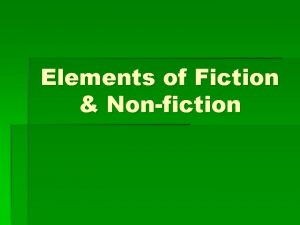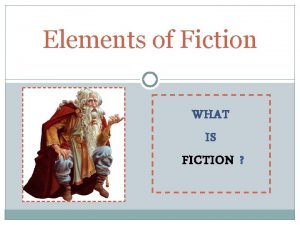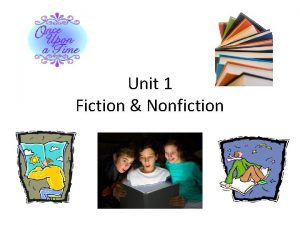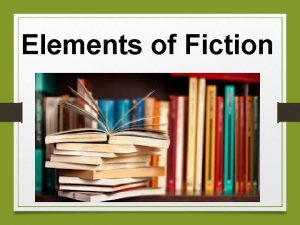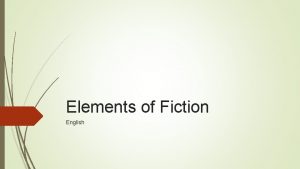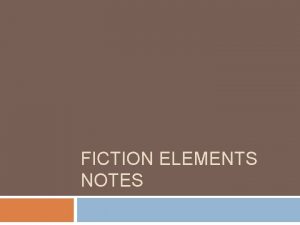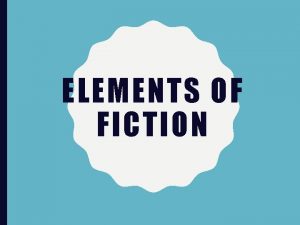Elements of Fiction Why do authors write fiction















- Slides: 15

Elements of Fiction

Why do author’s write fiction? Why are not all stories true?

Fiction: Short Story (flash fiction): extremely brief story Novella: a story of intermediate length Novel: long work of prose fiction. Includes:

Character: a person (or sometimes an animal) who figures in the action of a literary work. Character trait Examples:

Character Protagonist: main character; the central figure in a literary work. Examples: Antagonist: a character who is pitted against a protagonist Examples:

Character Major: Minor:

Character Flat (____________________): a character who exhibits a single dominant quality Examples: Rounded (__________________): a character who exhibits the complexity of traits associated with human beings Examples:

Character Static: Dynamic: Stock: character found again and again in different literary works Examples:

Motivation: the force that moves a character to ______, or _______ in a certain way

Characterization: Use of literary techniques to create a character Techniques

Direct Description The author comments on character through: The author communicates appearance, habits, dress, background, personality, motivations, etc.

Examples A man wearing black with darting dark eyes A young woman in white

Portrayal of Character’s Behavior Author uses _________ and ________ of a character Reader draws his or her own conclusions from what character ________ or __________

Representations of Internal States Reveals character’s private thoughts usually through internal monologue Example: Now don't misunderstand me, I mean, I want you to know from the beginning that I'm not really stupid. I know what's right and wrong for a girl to do. I get around, I read, I listen to my friends, and I have two older brothers to tell me what to do. I know it's becoming to wear slimming skirts and smart blouses, and stockings, and French-heeled shoes. And I know your hair should be kept neatly, with maybe a little bow at the top. Now me, I don't wear my hair too high like some; it makes me too young, and it just doesn't suit me. Well, anyway, I'm not in the least bit smalltown. I read "Dear Abby. " I read Woman’s Day. I get to know how men think, how to make my cheeks look like they have natural blush, and what is currently the prettiest. This isn't really what I wanted to tell you. I just wanted you to get the general idea of how I'm not stupid. It's vital that you understand that. You see, it was funny how I met him.

Who is this character? How is this character portrayed? (What’s this character’s personality? ) Where/when is the character? What’s the situation?
 An author's purpose is his or her for writing
An author's purpose is his or her for writing Three purposes of writing
Three purposes of writing Elements of non-fiction
Elements of non-fiction Hey hey bye bye
Hey hey bye bye Urban street books
Urban street books Example of citing sources
Example of citing sources Parenthetical referencing
Parenthetical referencing Apa in text citation of two authors
Apa in text citation of two authors Science fiction
Science fiction Contemporary realism literature
Contemporary realism literature Fiction and non fiction activities
Fiction and non fiction activities The veldt characterization
The veldt characterization Important of symbols
Important of symbols What is a hypophora
What is a hypophora Why do authors use imagery
Why do authors use imagery Why do authors use foreshadowing
Why do authors use foreshadowing
